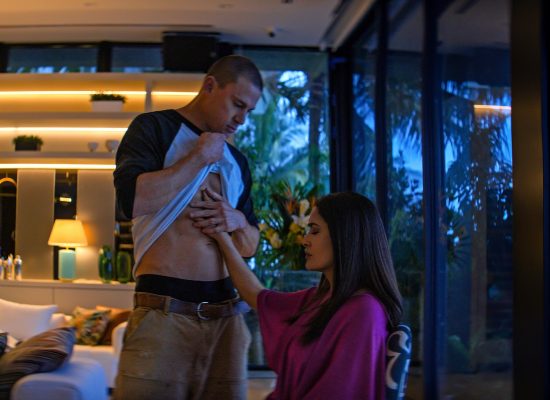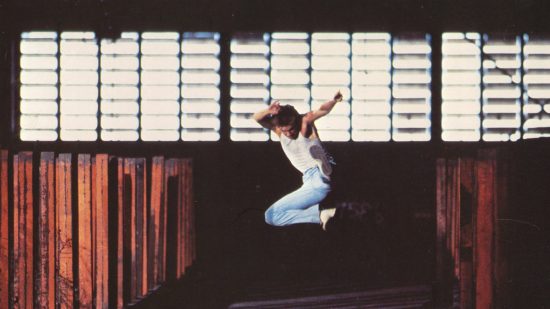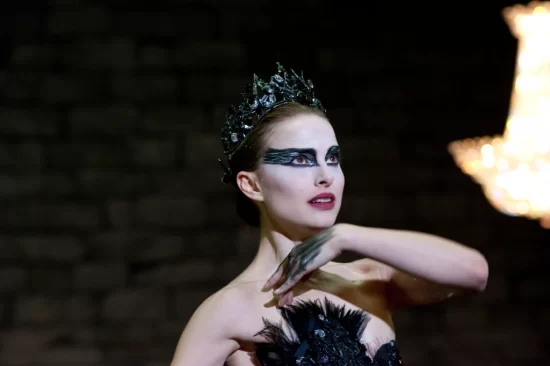Top 5 Dance Films
With iconic choreography and memorable music to match, the dance film has become a staple genre, producing some of the most widely recognised moments in cinema over the last few decades. To celebrate the DVD and Blu-ray release of Magic Mike’s Last Dance on 24th April, we’re taking a look at the top 5 dance films to date, and the numbers that put them on the map in popular culture.
FOOTLOOSE (1984)
Arguably the trailblazer of the 80’s dance film, Footloose follows Ren, a teenager from Chicago, as he adjusts to the move from city life to small-town America. But there’s one monumental difference; the Reverend of Bomont has banned rock music and dance, a rule that Ren begins to rebel against as their senior prom fast approaches. As he familiarises himself with the town and its inhabitants (including the preacher’s daughter, Ariel), Ren’s call to lift the dance ban gains momentum among his peers, and they set out to change the law, and the perception of dance in Bormont, forever.
The film’s dance scenes feel authentic and joyful, with sweaty bodies and cowboy-booted feet moving to the Academy Award nominated soundtrack. The final number of Footloose, choreographed to the song of the same name, captures how dance acts as an expression of youth, spirit and joy. The simple repetitive steps of this number have since been interpreted and recreated across film, TV and social media; including a viral line dancing face-off in the hit series The Umbrella Academy.
STEP UP (2006)
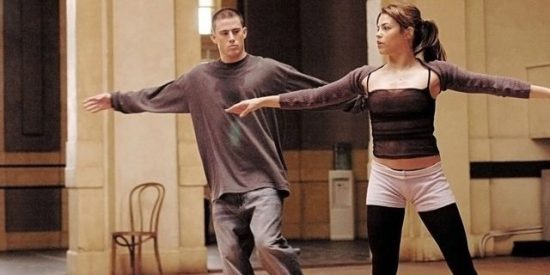
Starring Magic Mike’s own Channing Tatum, Step Up brings contemporary dance, in all its forms, together on the screen. As a young man struggling with his identity and purpose in life, Tyler Gage (Tatum), lands himself in a community service sentence at the school he was caught vandalising: the prestigious Maryland School of Arts. With a natural talent for dance and a love for the hip-hop genre, Tyler catches the eye of Nora, a passionate student who’s in need of a dance partner for her final showcase. An unlikely pairing, Tyler and Nora begin to dance together, which results in a blossoming romance, and the final showcase becomes integral to both of their lives: with the potential of a professional career for Nora, and a chance to change his life with an arts scholarship for Tyler.
Step Up’s numbers bridge the gap between the more refined modern dance style and the commercial, more punctuated hip-hop genre, which becomes a running theme in the subsequent instalments of the series. Nora’s final piece emulates this collision of styles, and emphasises the ability of dance to bring together unexpected matches, on and off the stage.
BLACK SWAN (2010)
Black Swan showcases a more sinister and destructive side to dance, especially within the professional industry. Natalie Portman is Nina Sayers, a ballet dancer at the prolific New York City Ballet Company. Set on delivering perfection in his performances, artistic director Thomas Leroy begins auditions for the performance of the iconic Swan Lake; with one dancer playing both the pure and virtuous Odette, and the ominous and deceiving Odile. After a perfect audition for Odette, Thomas is unconvinced that Nina has the depth and allure to play Odile- but he offers her the part nonetheless, and asks her to watch Lily (Mila Kunis), a new dancer that has joined the company that possesses the sensual qualities needed for the black swan. As rehearsals progress, Nina becomes paranoid that Lily is attempting to steal her role, especially when she is made understudy for the performance, and this obsession pushes Nina to breaking point, both physically and mentally.
The film is full of parallels and contrasts, pitting the disturbing and violent images that begin to taunt Nina’s mind against the delicate movements of the show’s choreography. Both Natalie Portman and Mila Kunis trained extensively in ballet before production began, and Portman won the Academy Award for Best Actress for her compelling performance portraying the depths of pain and violence in such a beautiful dance form.
DIRTY DANCING (1987)

Much like Footloose, Dirty Dancing was produced in the hey-day of the dance film, and has become a cult classic in cinema and the dance world alike. On the verge of womanhood, Francis, or ‘baby’ as her parents call her, arrives at Kellerman’s resort with her family to spend the summer. As a daughter of a wealthy surgeon, and with her sights set on college applications, Baby is the epitome of the ‘upper-class sweetheart’; polite, innocent, and sheltered. After a few monotonous and dull dances with the elderly guests, Baby stumbles upon a staff party, where she discovers a more raw and sensual style of ballroom and latin dance, embodied by Jonny, one of the dance instructors. When his dance partner Penny is forced to pull out of their shows due to complications from an unsafe abortion, Baby steps in, and begins to practise with Jonny, discovering her maturity, and sexuality, through dance.
Dirty Dancing is full of iconic choreography; the cha-cha steps on the log, the final dance number, and the incredible lift, just to name a few. Not only are these dances so effective due to the talent of Jennifer Grey and Patrick Swayze, but their chemistry together creates dance numbers that feel powerful and genuine, providing a method of communication for their desire for one another.
BILLY ELLIOT (2000)
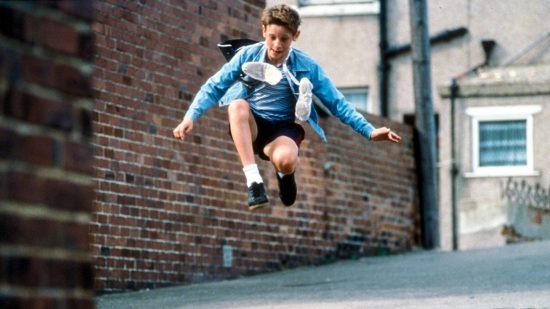
Set in a small Northern mining town in 1984, Billy Elliot redefines stereotypes of male dancers, and tells the story of a young boy’s love for ballet that transcends gender, class, and politics.11-year-old Billy lives with his family in the suburbs of Evrington, where his widowed father and brother are striking to protest Margaret Thatcher’s bill to close all collieries. After watching a ballet class while attending a boxing session that his father signed him up for, Billy is intrigued by dancing, and begins to take the ballet class in secret. With a natural gift, Billy’s teacher Mrs Wilkinson senses his talent, sending off an application to the Royal Ballet School. However, when Billy’s father learns of his passion for dancing, he refuses to let Billy audition, and bans him from the class, led by traditional conceptions of ballet as feminine and weak. Billy continues to fight to pursue his dreams of attending the Royal Ballet School, and his devotion changes the minds and hearts of his family, and his community.
Although Jamie Bell’s pirouettes and pliés aren’t perfect, his commitment to learning the technique of the classical art form makes him a successful dancer, and the joy he takes in learning and performing radiates through his choreography. When Billy’s dad catches him dancing, he performs an emotional rendition of his audition piece, channelling his anger into the movements of his body, and showing that dance can channel emotion, and turn it into a powerful mode of communication.
Magic Mike’s Last Dance is available on Blu Ray and DVD from the 24th April.
Thank you for supporting Live for Films (LFF) when you order using the link below. As an Amazon Associate LFF earns from qualifying purchases. If you are using an adblocker you will not see the link.

